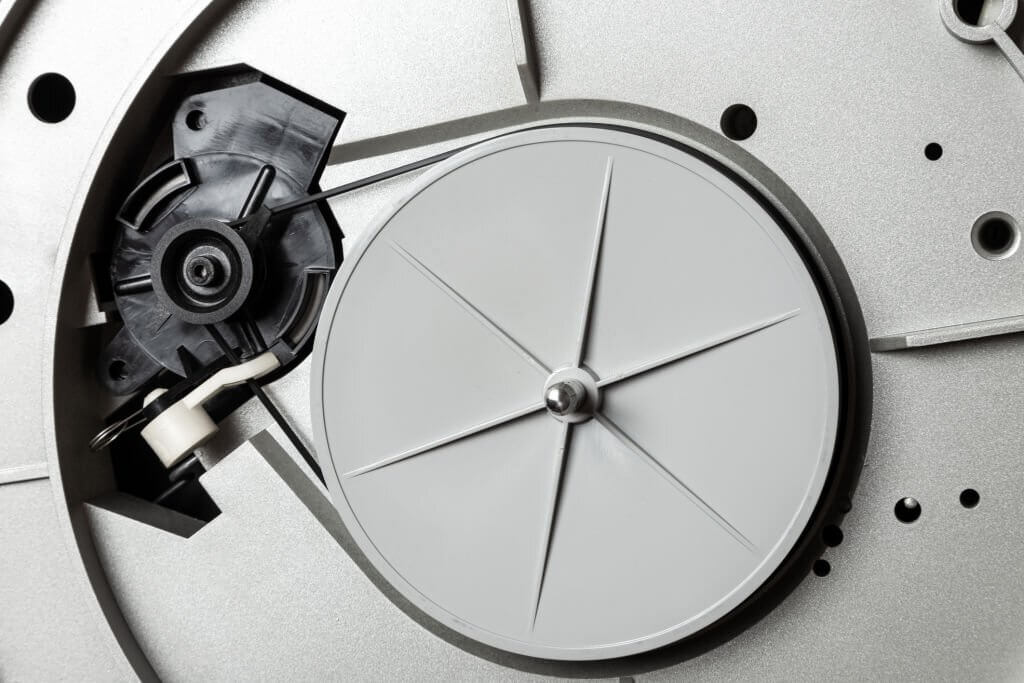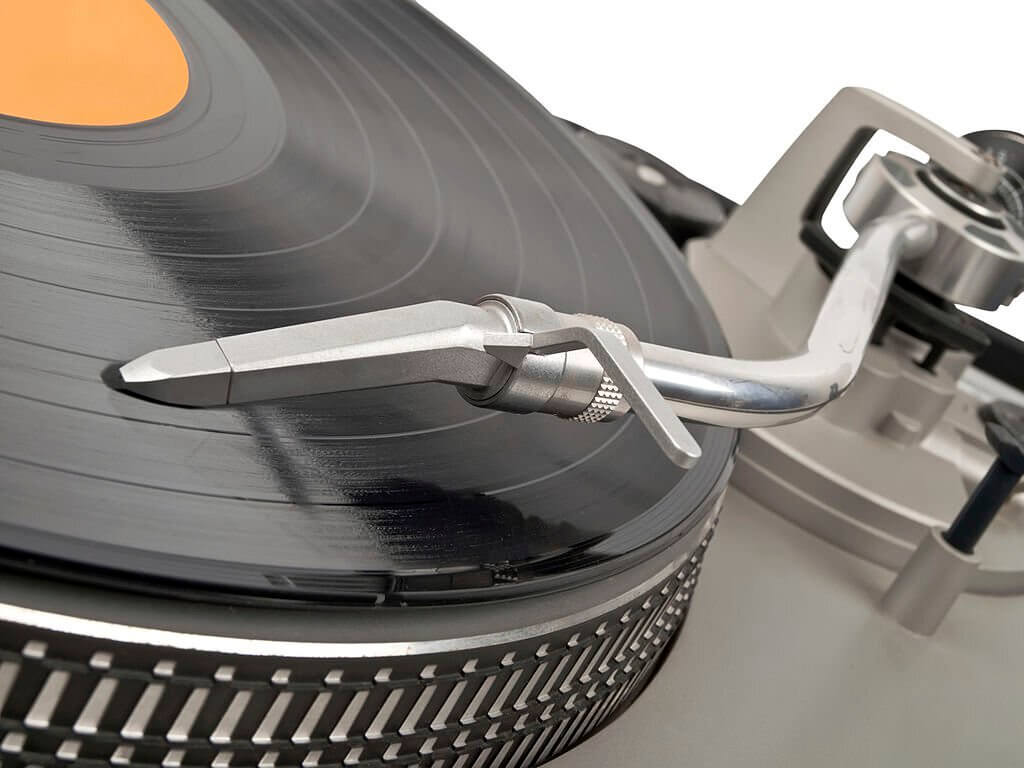Belt Drive vs. Direct Drive Turntables: Which is Better for You?
If you’re in the market for a new turntable, you may be wondering whether belt drive or direct drive is the better option. Both types have their pros and cons, so it can be difficult to decide which is right for you.
In this blog post, we will discuss the differences between belt drive and direct drive turntables and help you decide which type is best for your needs.
What is a belt-drive turntable?

A belt-drive turntable uses a rubber or textile belt to connect the motor to the platter. This type of turntable is typically more affordable than direct drive models, and it also produces less noise and vibration. Belt-drive turntables are ideal for casual listeners who want an easy-to-use turntable that sounds great.
What are the benefits of a belt-drive turntable?
A belt-drive turntable typically has less wow and flutter than a direct-drive turntable. This is because the belt absorbs some of the motor’s vibrations, which keeps them from being transferred to the stylus and record.
Belt-drive turntables are also usually quieter than direct-drive models, because the belt absorbs some of the noise from the motor.
What are the disadvantages of a belt-drive turntable?
A belt-drive turntable has a few disadvantages when compared to a direct-drive turntable. First, the belt can wear out over time, which can cause problems with sound quality. Second, the belt can slip off of the pulley, which will interrupt the music playback. Finally, belt-drive turntables are generally more expensive than their direct-drive counterparts.
What is a direct-drive turntable?

A direct-drive turntable is a type of turntable that uses an electric motor to spin the platter directly. This contrasts with belt-driven turntables, which use a rubber belt to transmit power from the motor to the platter. Direct-drive turntables are considered more reliable and efficient, but they can also be more prone to vibration and noise.
What are the benefits of a direct-drive turntable?
Direct-drive turntables offer several advantages over belt-driven models. They are typically more reliable and efficient, meaning they require less maintenance and can produce higher playback speeds. Additionally, they tend to be more responsive and provide greater torque, making them ideal for DJs and other professional users.
What are the disadvantages of a direct-drive turntable?
A direct-drive turntable also has a few disadvantages. First, the motor can generate unwanted noise that can be picked up by the stylus and cause problems with sound quality. Second, if the motor fails, it can be very difficult to replace. Finally, direct-drive turntables are generally more expensive than belt-drive turntables.
The differences between belt-drive and direct drive turntables
The differences between belt-drive and direct drive turntables are important to understand if you’re looking to buy a new turntable. In this article, we break down the differences between these two types of turntables and help you decide which is better for you.
Belt-drive turntables are more popular than direct drive models because they offer several advantages. First, belt-drive models are typically more affordable than direct drive turntables.
They also tend to be lighter and more portable, making them a good choice for people who want to take their turntable with them on the go. Additionally, belt-drive turntables produce less vibration than direct drive models, which can result in better sound quality.
Direct drive turntables offer a few advantages over belt-drive models. First, they are typically more durable than belt-drive turntables.
They also tend to have a faster start-up time, which can be important for DJs who need to quickly get their turntable up and running. Additionally, direct drive turntables typically have a higher torque, which means they can reach the desired speed more quickly.
The similarities between Belt Drive Turntable Vs Direct Drive turntable
Both belt drive and direct drive turntables use a spinning platter to rotate the record. The main difference is how the motor connects to the platter.
A belt drive system uses a rubber or cloth belt to connect the motor to the platter. This allows for more torque, or rotational force, which results in less vibration and a steadier rotation. A direct drive system connects the motor directly to the platter.
Belt drive turntables have a few advantages over their direct drive counterparts. First, belt drives are not as susceptible to outside vibrations, which means they can produce a cleaner sound.
Second, because the motor is isolated from the platter, there is less wear and tear on the motor, which increases the life of the turntable. Finally, belt drives are typically more affordable than direct drive turntables.
Direct drive turntables have a few advantages over their belt drive counterparts. First, they offer more torque, which results in a faster start-up and rotation. Second, direct drive turntables are typically more affordable than belt drive turntables. Finally, direct drive systems are easier to repair and maintain than belt drive systems.
Price.
The average cost of a good quality belt drive table is about $200. The average cost of a direct drive is about $500. If you’re looking for the best bang for your buck, a belt drive turntable is the way to go.
Sound Quality.
When it comes to sound quality, both types of turntables have their pros and cons. Belt drive tables are known for their warm, natural sound, while direct drive tables are known for their accurate reproduction of sound.
Durability.
Belt drive turntables are typically more durable than direct drive tables. This is because the belt absorbs some of the vibrations that can damage the table motor and other components.
Ease of Use.
Belt drive turntables are typically easier to use than direct drive tables. This is because belt drive tables have a slower speed, which makes it less likely that the needle will jump off the record.
Setup.
Belt drive turntables are usually easier to set up than direct drive tables. This is because you don’t have to worry aboutaligning the table motor with the platter.
Maintainance.
Belt drive tables require less maintainance than direct drive tables. This is because the belt doesn’t need to be replaced as often as the belt on a direct drive table.
FAQs
How long do belt drive turntables last?
This is a common question that people have when it comes to belt drive turntables. The truth is that there is no definite answer, as the lifespan of a belt drive turntable can vary depending on a number of factors, such as how often it’s used and how well it’s taken care of. However, most belt drive turntables should last for several years with proper care.
Direct drive turntables, on the other hand, are known for their durability and long lifespan. They are made with high-quality materials and designed to withstand years of use. If you take care of your direct drive turntable, it will likely last you a lifetime.
Can you DJ on belt drive turntables?
The short answer is yes. You can DJ on belt drive turntables, but you might have a harder time doing certain tricks and maneuvers. That said, it all comes down to what you’re comfortable with and what works best for your setup.
Related:
- Audio Technica AT-LP60 Review: An Affordable and Quality Turntable
- Fluance RT85 Review: Pros and Cons
- Audio Technica LP120 Review (Pros and Cons)
- Crosley Turntables Reviews: Why You Shouldn’t Buy a Crosley Turntable
So, which is better for you? Belt drive or direct drive?
The answer to this question depends on your needs and preferences. If you want the best sound quality possible, then a belt-drive turntable is the way to go. However, if you’re on a budget, then a direct-drive turntable may be the better option. Ultimately, the choice is up to you!
Do you have any experience with belt drive or direct drive turntables? Let us know in the comments below!







